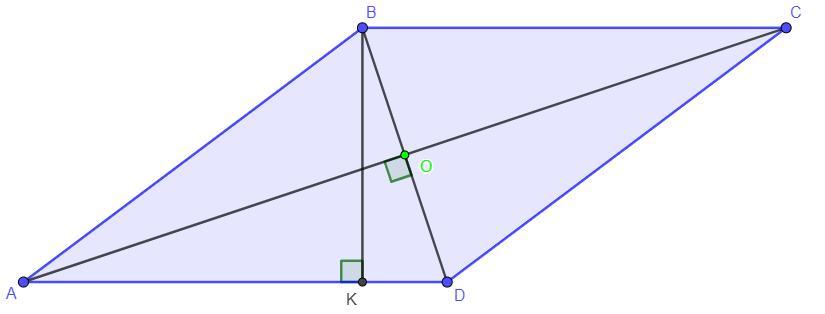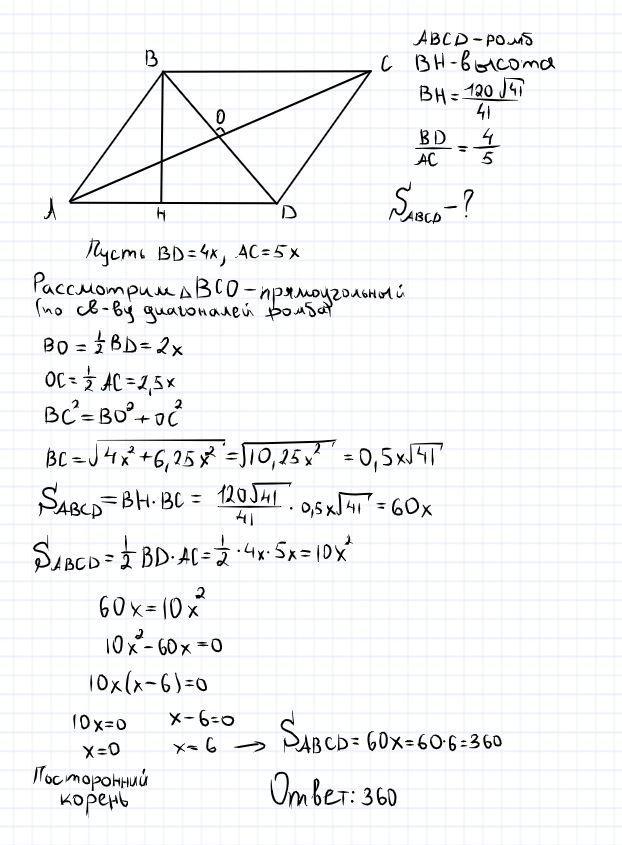Предмет: Геометрия,
автор: vadzxc
Найдите площадь ромба, высота которого равна (120 √41)/41 и его диагонали относятся как 4:5
Ответы
Автор ответа:
2
Ответ:
квадратных единиц
Объяснение:
Дано:
Найти:
Решение:
Пусть BD ∩ AC = O.
Так как по условию BD : AC = 4 : 5, то введем коэффициент пропорциональности x, тогда BD = 4x, AC = 5x.
По свойствам ромба его диагонали точкой пересечения делятся пополам, тогда AO = OC = AC : 2 = 5x : 2 = 2,5x; BO = OD = 4x : 2 = 2x.
Так как по свойствам ромба AC ⊥ BD, то по теореме Пифагора для треугольника ΔAOD:
Запишем систему уравнений выразив площадь ромба:
квадратных единиц.
Приложения:

Автор ответа:
0
Ответ:
360
Объяснение:
Приложения:

Похожие вопросы
Предмет: Русский язык,
автор: Анастасиярулит
Предмет: Другие предметы,
автор: slim356
Предмет: Русский язык,
автор: karina2karinka
Предмет: Химия,
автор: karamurzaeva2016